My Mother’s Peasant Bread: The Best Easiest Bread You Will Ever Make
This post may contain affiliate links. Please read my disclosure policy.
This is the no-knead bread recipe my mother has been baking for 45 years. Start to finish, it can be ready in three hours. It bakes in well-buttered Pyrex bowls — no need to preheat a baking vessel for this recipe — and it emerges golden and crisp with a soft, tender crumb. 🍞🍞🍞🍞🍞
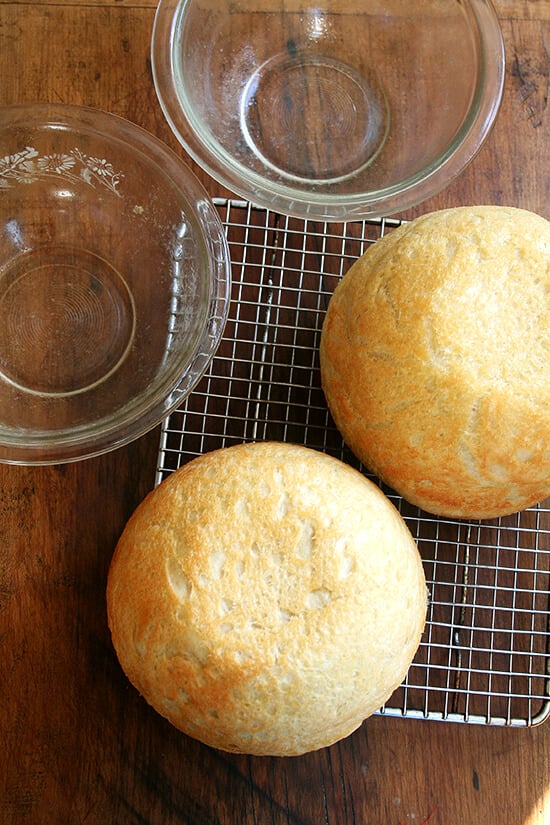
When I tell you that, if forced, I had to pick one and only one recipe to share with you that this — my mother’s peasant bread — would be it, I am serious. I would almost in fact be OK ending the blog after this very post, retiring altogether from the wonderful world of food blogging, resting assured that you all had this knowledge at hand. This bread might just change your life.
The reason I say this is simple. I whole-heartedly believe that if you know how to make bread you can throw one hell of a dinner party. And the reason for this is because people go insane over homemade bread. Not once have I served this bread to company without being asked, “Did you really make this?” And questioned: “You mean with a bread machine?” But always praised: “Is there anything more special than homemade bread?”
And upon tasting homemade bread, people act as if you’re some sort of culinary magician. I would even go so far as to say that with homemade bread on the table along with a few nice cheeses and a really good salad, the main course almost becomes superfluous. If you nail it, fantastic. If you don’t, you have more than enough treats to keep people happy all night long.
The Magic of the Peasant Bread
So what, you probably are wondering, makes this bread so special when there are so many wonderful bread recipes out there? Again, the answer is simple. For one, it’s a no-knead bread. I know, I know. There are two wildly popular no-knead bread recipes out there.
But unlike the others, this is a no-knead bread that can be started at 4:00pm and turned out onto the dinner table at 7:00pm. It bakes in well-buttered Pyrex bowls — there is no pre-heating of the baking vessels in this recipe — and it emerges golden and crisp without any steam pans or water spritzes. This is not artisan bread, nor is it trying to be. It is peasant bread, spongy and moist with a most-delectable buttery crust.
Genuinely, I would be proud to serve this bread at a dinner party attended by Jim Lahey, Mark Bittman, Peter Reinhart, Chad Robertson, Jeff Hertzberg and Zoe Francois. It is a bread I hope you will all give a go, too, and then proudly serve at your next dinner party to guests who might ask where you’ve stashed away your bread machine. And when this happens, I hope you will all just smile and say, “Don’t be silly. This is just a simple peasant bread. Easy as pie. I’ll show you how to make it some day.”
Peasant Bread Variations
Once you master the peasant bread, you can make any bread your heart desires — this simple no-knead bread recipe is the foundation of many of the other bread recipes on this site, namely this hugely popular overnight refrigerator focaccia and this simple homemade pizza dough. It’s even the inspiration behind this sourdough focaccia and this sourdough sandwich bread and this simple pita bread recipe.
The below post is organized as follows:
- How to Make Peasant Bread, Step by Step
- The Best Way to Store Bread
- Peasant Bread Dinner Rolls
- Peasant Bread Sandwich Bread
- How to Add Seeds and Nuts to Bread Dough
- How to Make Gluten-Free Peasant Bread
- How to Coat the Loaves in Seeds
- How to use Whole Wheat Flour
- How to Bake the Peasant Bread in a Dutch Oven
Many more variations on the peasant bread can be found in my cookbook, Bread Toast Crumbs:
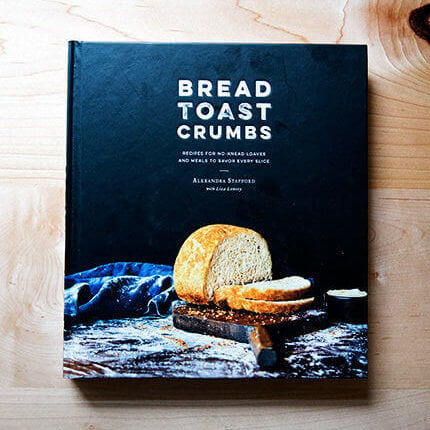
Bread Toast Crumbs
Love the peasant bread? There’s now a book filled with 40 simple bread recipes plus 70 recipes to use up every crumb of every loaf you bake.
How to Make Peasant Bread, Step by Step
First: You need yeast.
This is the yeast I buy exclusively: SAF Instant Yeast. Instant yeast can be whisked into the flour directly without any blooming or proofing. If you want to stick to active-dry yeast, there are instructions in the recipe notes on how to do so. Red Star yeast is great.
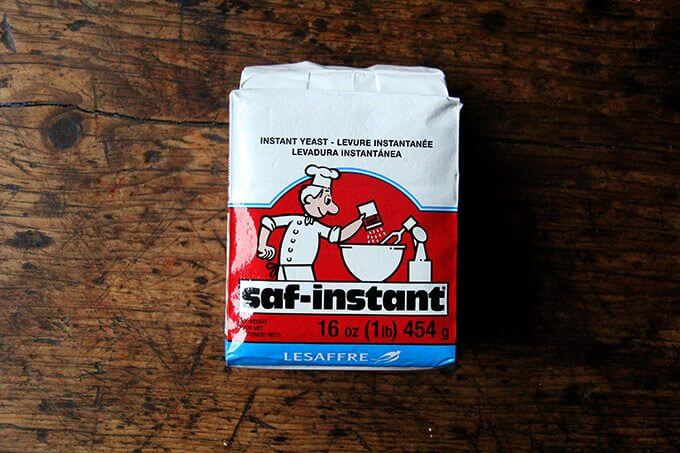
Whisk together flour, salt, sugar, and instant yeast. Add lukewarm water.
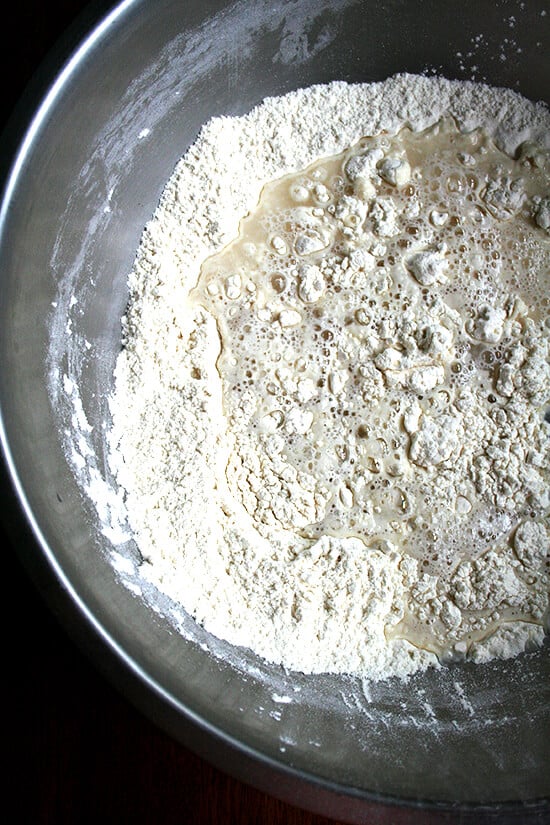
Mix until you have a sticky dough ball. Let it rise for 1.5 to 2 hours…
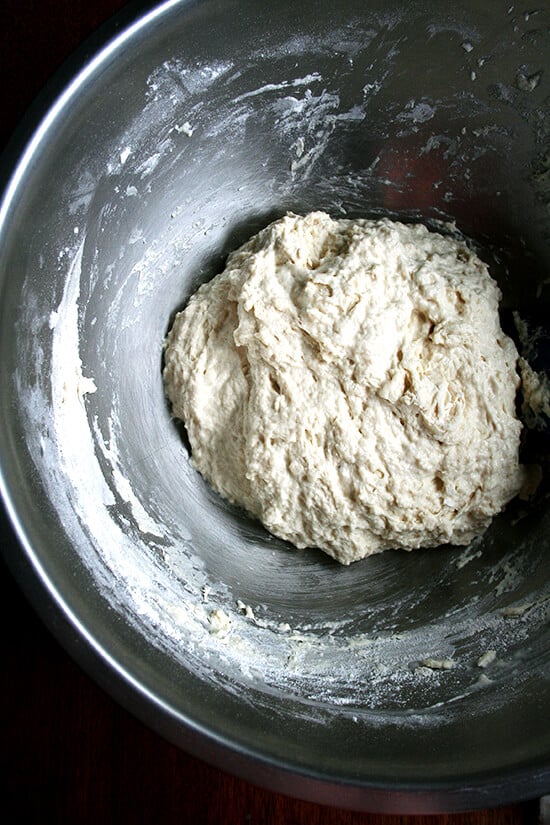
… or until it looks like this:
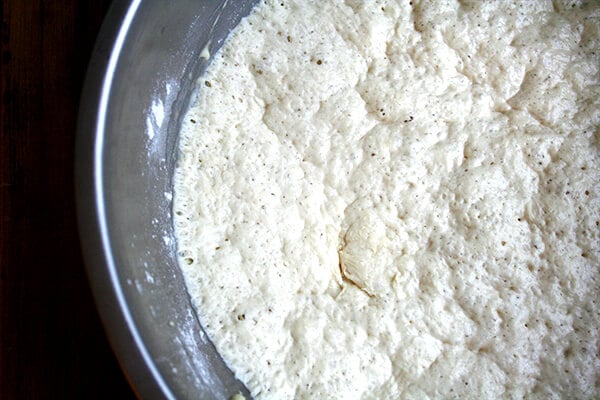
Punch down the dough using two forks.
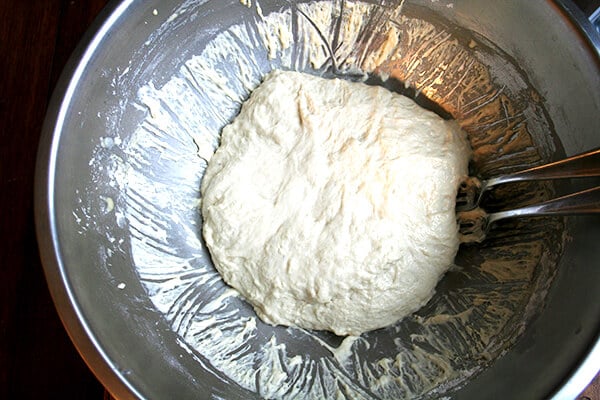
Then split the dough down the middle again using the two forks.
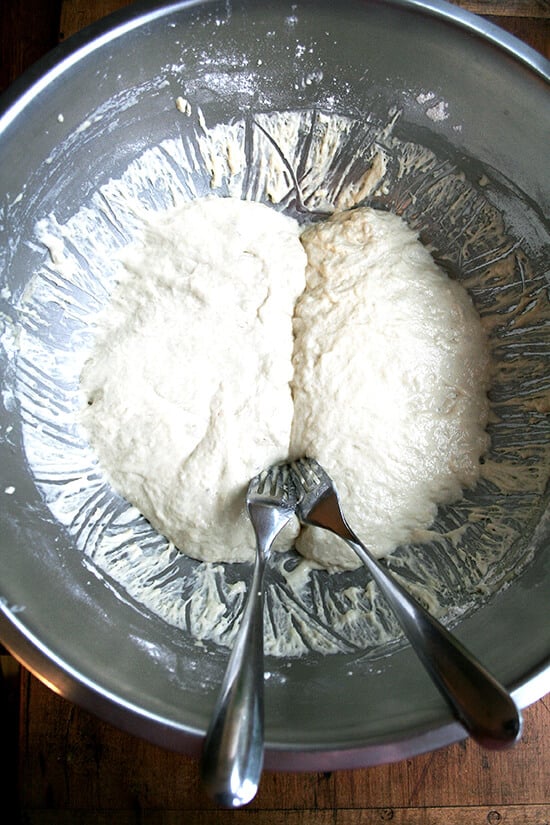
Because this is a very wet dough, it must be baked in an oven-proof bowl. I am partial to the Pyrex 1L 322 size, but any similarly sized oven-proof bowl will work.
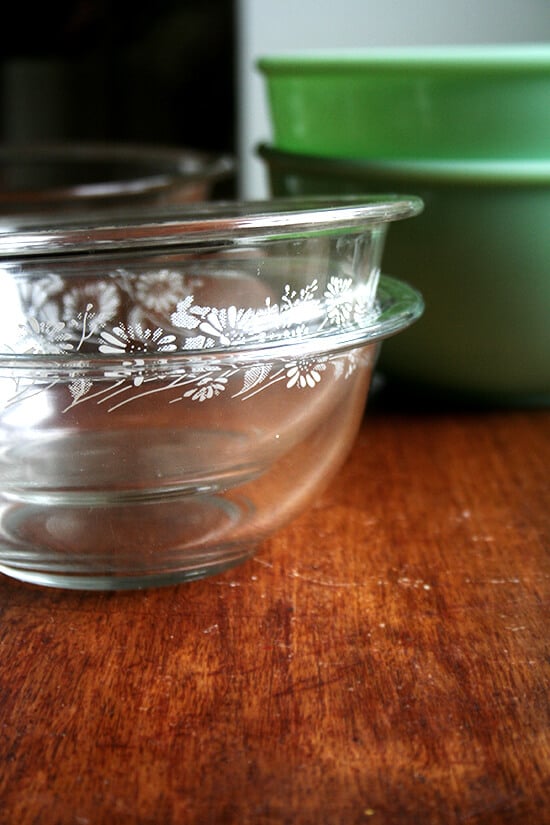
Butter the bowls well; then transfer half of the dough to each prepared bow.
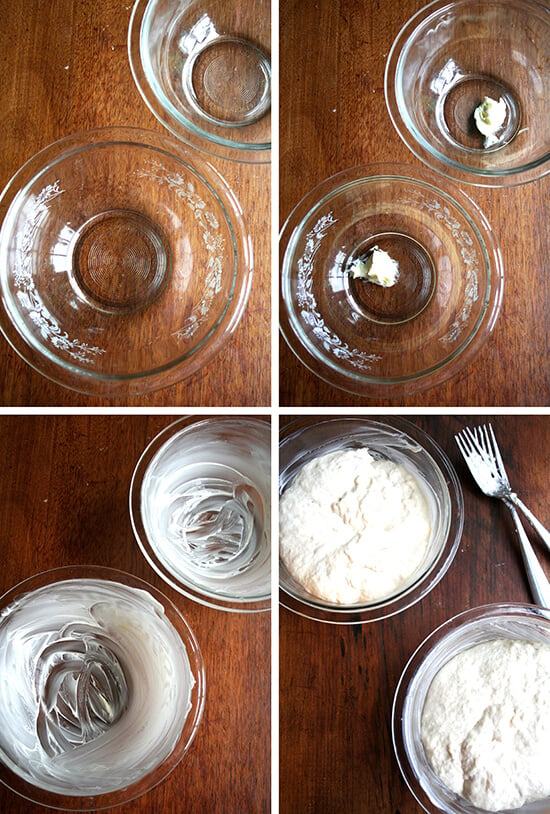
Let the dough rise again until it crowns the rim of the bowl, about 30 minutes.
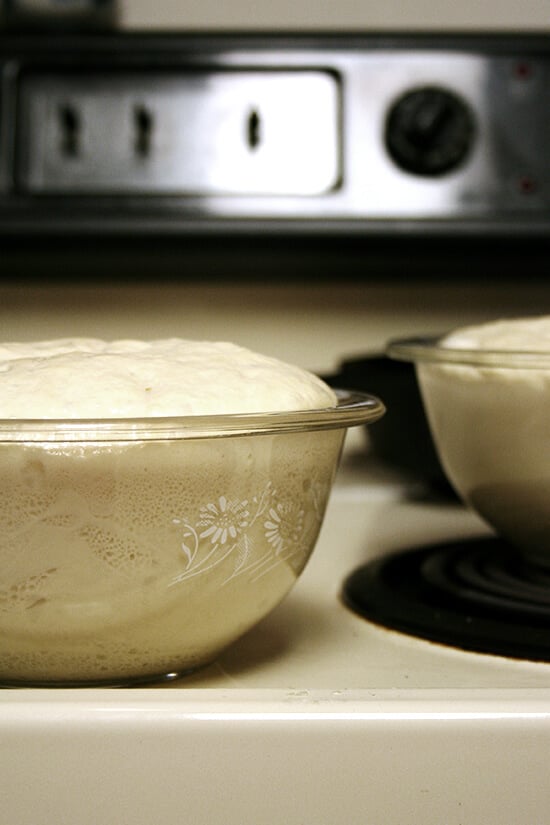
Transfer the bowls to the oven to bake:
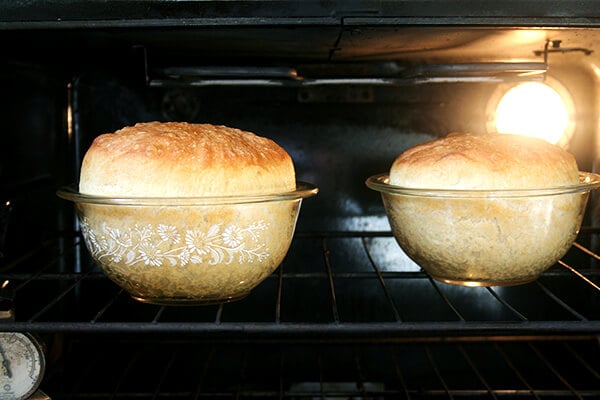
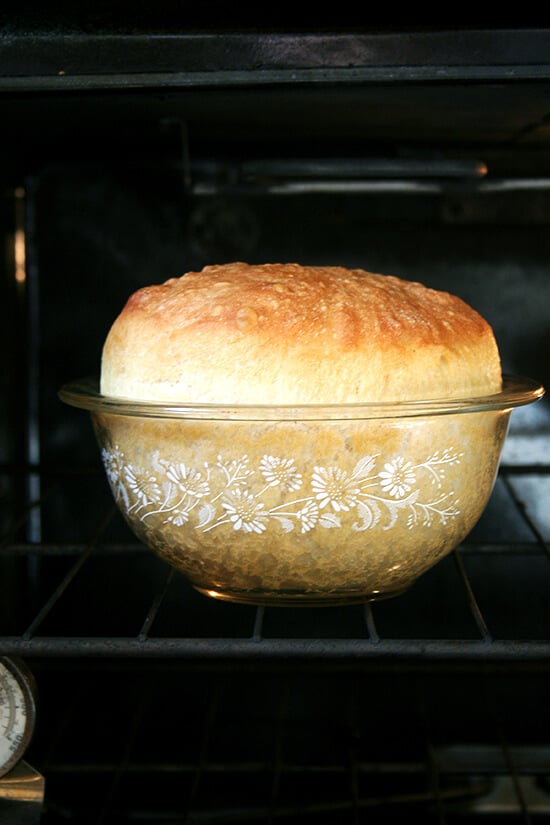
This bread is irresistible when it’s freshly baked, but it also makes wonderful toast on subsequent mornings as well as the best grilled cheese. It’s also my favorite bread to use for these egg salad sandwiches and for this no-tuna “tuna” salad.
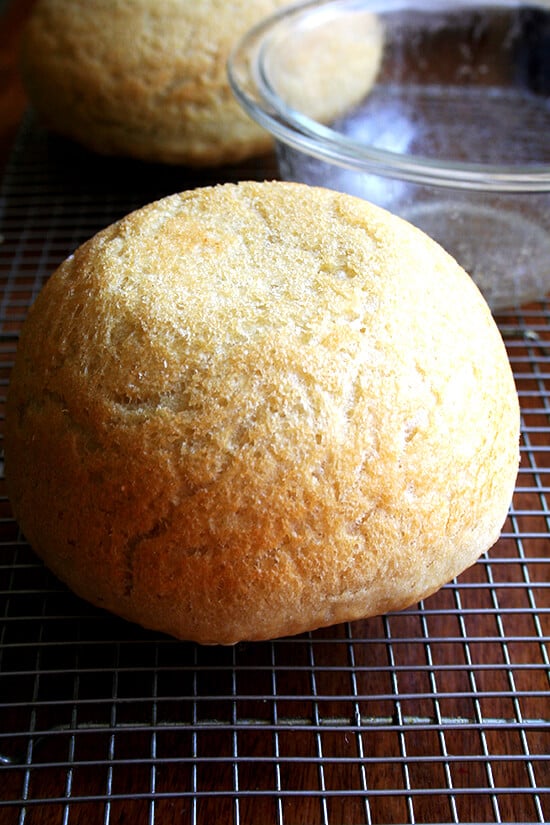
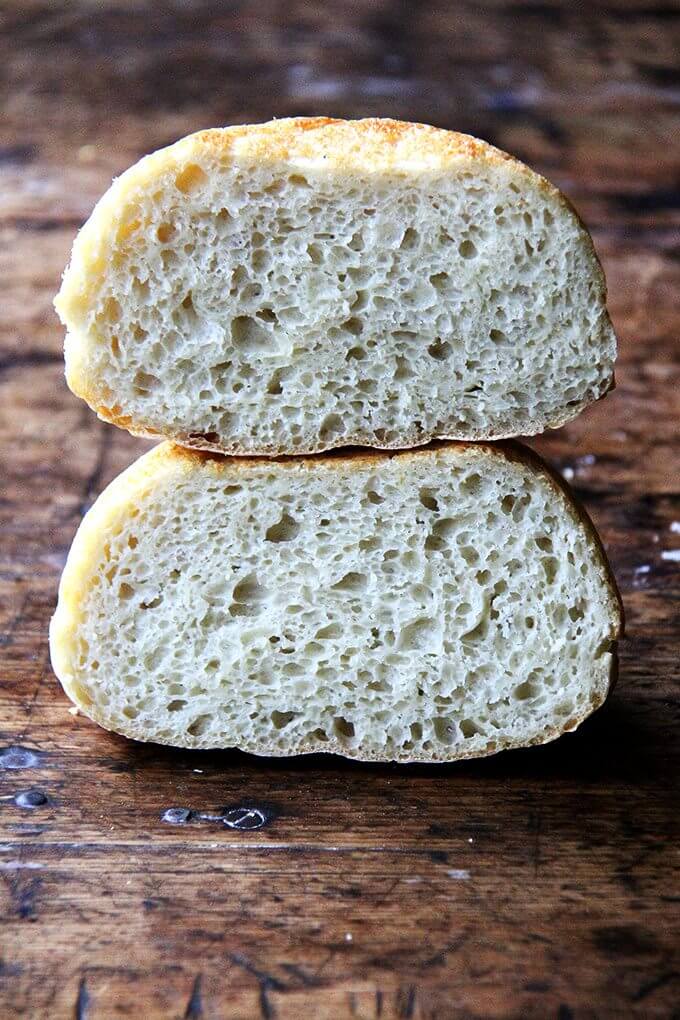
The Best Way to Store Bread
If you want to store the bread at room temperature for 3 to 4 days, I think the best method is in a ziplock bag. I’ve tried other eco-friendly options, but nothing seems to keep bread freshest — the crumb the softest — better than a ziplock bag. You can re-use the bags again and again.
If you intend to keep the bread for longer, I would freeze it. I often slice bread as soon as it cools completely, transfer the slices to a ziplock bag, then freeze. This way, I know the bread was frozen at its freshest.
A ziplock bag will not prevent the crust of bread from turning soft, which is why I suggest always reheating day-old bread. I use a toaster at breakfast for slices of bread, and I reheat half or quarter loaves in the oven at 350ºF for 15 to 20 minutes when serving for dinner.
Bread revives so beautifully in the oven or toaster.
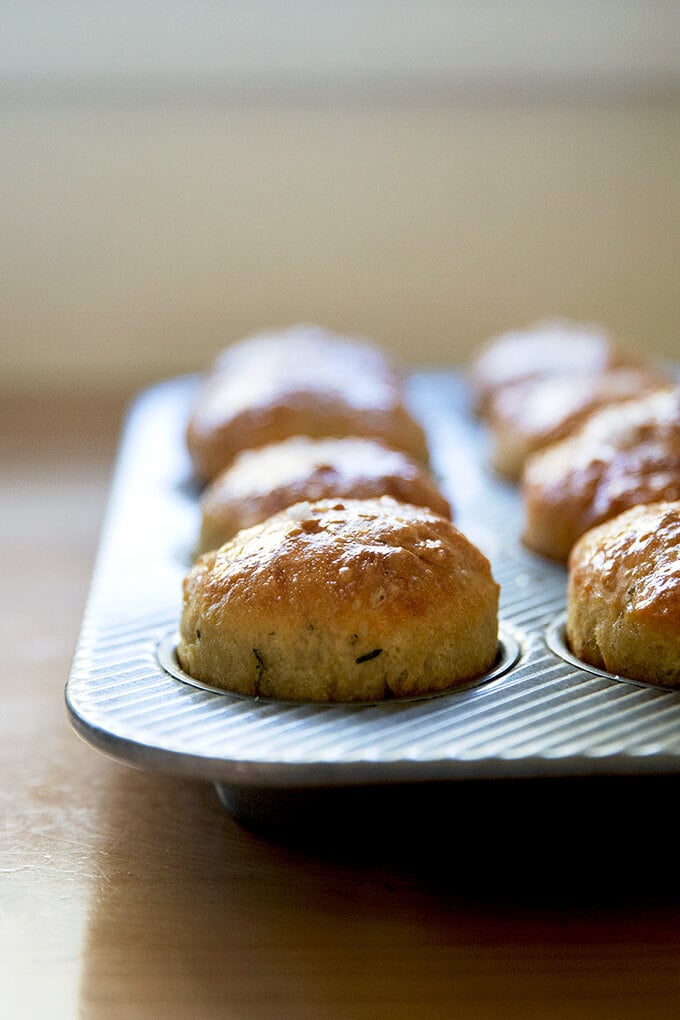
No-Knead Dinner Rolls
To use the peasant bread dough to make rolls, simply divide the dough into smaller portions and place in a buttered muffin tin as in these No-Knead Thyme Dinner Rolls (pictured above). This recipe for no-knead buttermilk pull-apart rolls is also based on the peasant bread as are these brioche pull-apart rolls.
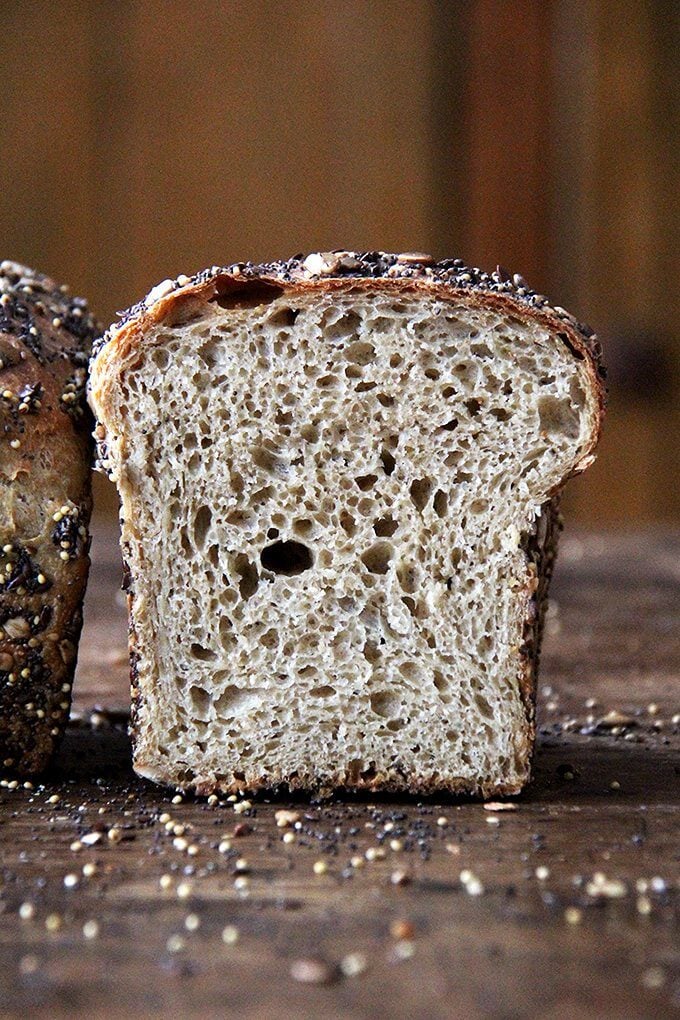
No-Knead Sandwich Bread
To make sandwich bread, multiply the recipe below by 1.5 and bake the bread in two buttered 8.5×4.5-inch loaf pans.
Made with half all-purpose flour and half King Arthur Sprouted Wheat Flour, these seed-coated sandwich loaves (pictured above) have a soft and light crumb. I really like KAF’s sprouted wheat flour, which is made from white whole wheat berries that, when sprouted, yield a creamy, sweet, milder-tasting flour. You can use 100% all-purpose or bread flour for an even lighter loaf or your favorite whole wheat flour in place of the sprouted wheat flour.
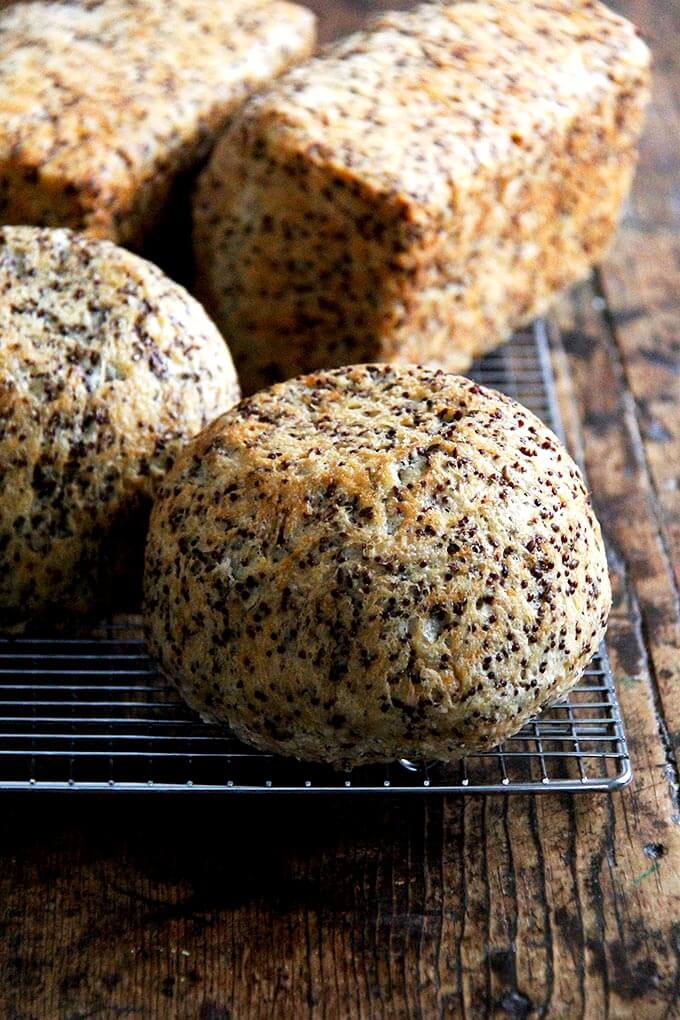
How to Add Nuts and Seeds to Bread Dough
To add seeds and nuts (or dried fruit and cheese), simply stir them into the dry ingredients. This recipe for Quinoa-and-Flax Toasting Bread will offer guidance on how much to add.
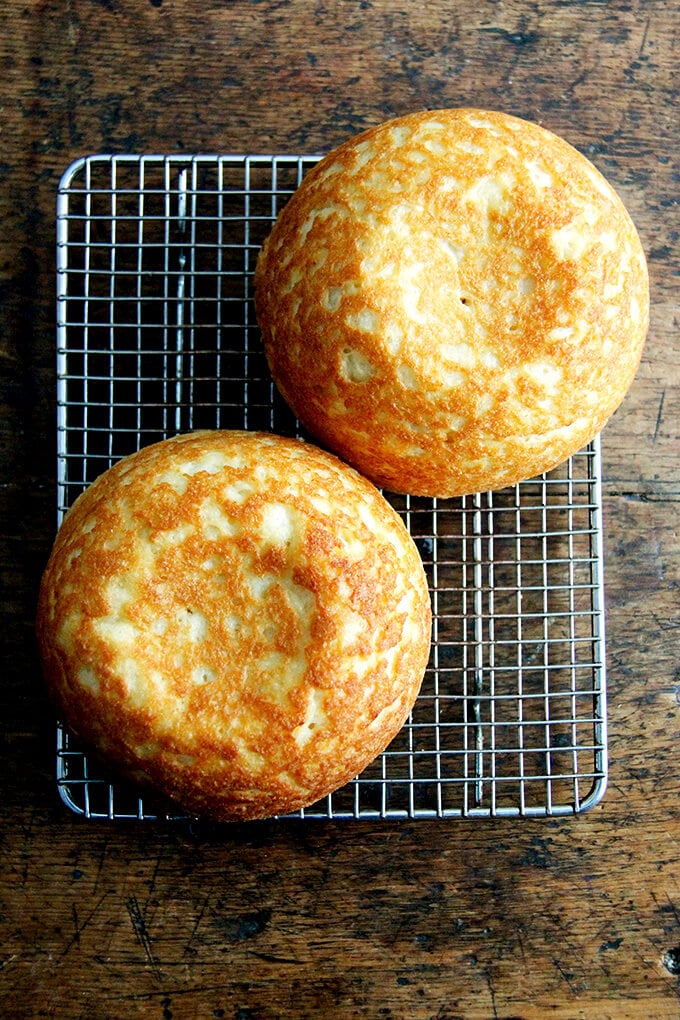
How to Make a Gluten-Free Peasant Bread
Making gluten-free peasant bread (pictured above) unfortunately isn’t as simple as swapping in gluten-free flour for the wheat flour. But the process and recipe is still super simple — in fact, because there’s only one rise, many people find the gluten-free peasant bread to be even simpler than the original. Find the recipe here: Gluten-Free Peasant Bread
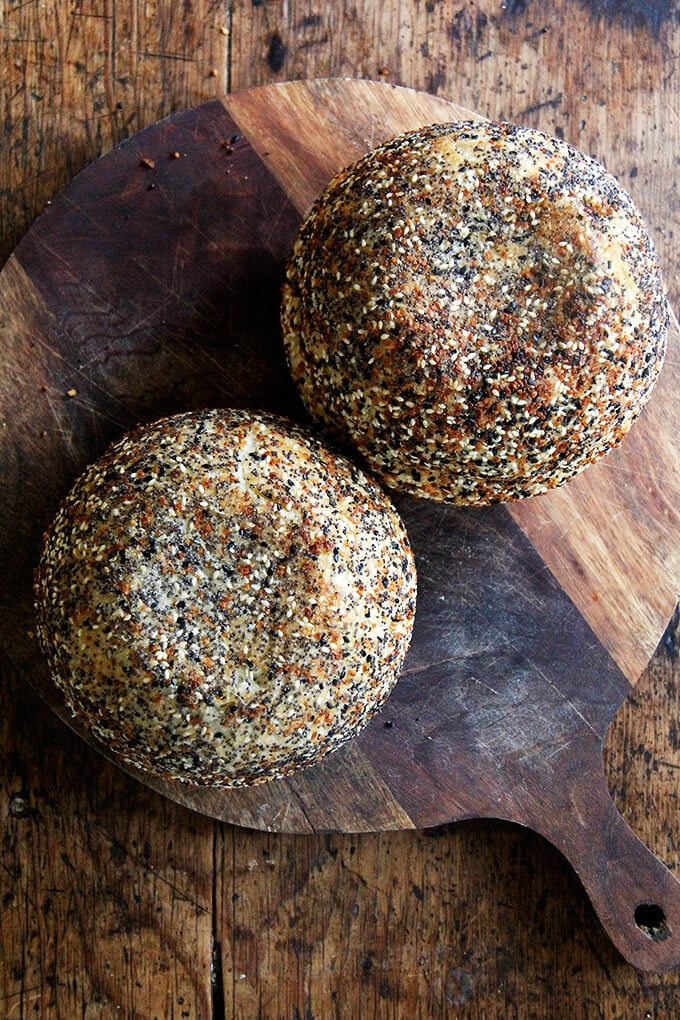
How to Coat the Loaves in Seeds
To coat the peasant bread in seeds, as pictured above, simply coat the bowls with everything bagel seasoning or with dukkah or sesame seeds or whatever seed mix you wish. The seed-coated loaves look so beautiful, and it’s amazing how much the flavor of the coating permeates the loaves. Find the recipe here: Everything Bagel Seasoning Peasant Bread
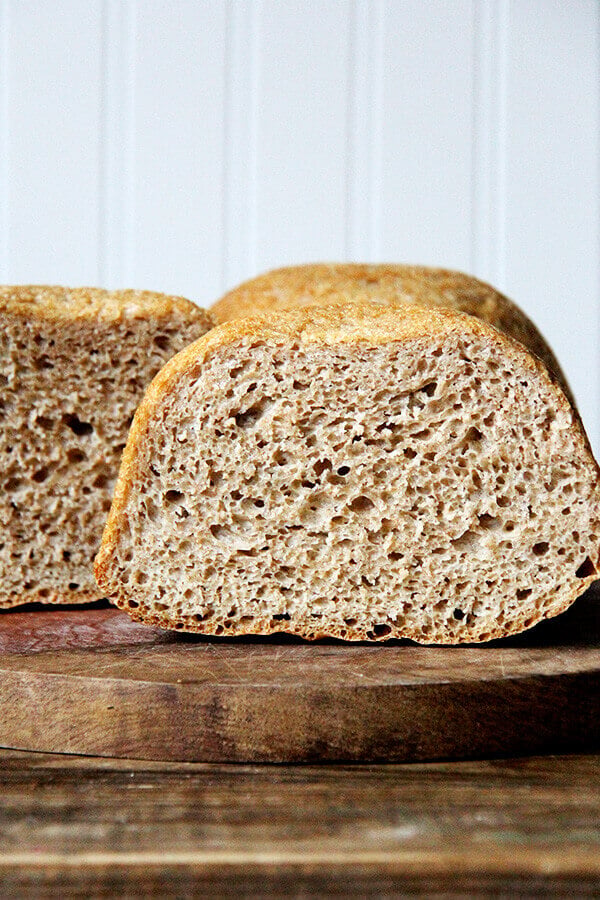
How to Use Whole Wheat Flour
To use whole wheat flour in the peasant bread, simply replace as much as 50% of the all-purpose flour with your favorite whole wheat flour: I like KAF’s sprouted wheat flour, and I’ve been loving the Cairnsprings Mill Trailblazer stone-milled flour. With the Trailblazer, I can use up to 75% of it in the peasant bread, and it yields a beautiful, chewy texture as well as a lovely flavor and aroma.
When using whole wheat flour, you may have to use more or less water — there is no rule as to how much more or less, and it will take some trial and error to get right because all flours absorb water differently. When I use KAF sprouted wheat flour, for example, I don’t change the water amount at all. When I use the Trailblazer flour, on the other hand, I reduce the water by at least 50 grams.
If you’d like to learn more about whole wheat flour and stone-milled flours, read this: Easy Sourdough Bread (Whole Wheat-ish)
How to Bake the Peasant Bread in a Dutch Oven
If you’re looking for more of a crackling crusted boule (characteristic of a loaf of sourdough bread) as opposed to the buttery crispness of the peasant bread, you can bake the peasant bread dough in a preheated Dutch oven.
There are detailed instructions below the recipe in the notes section, but one thing to keep in mind before you begin is dough hydration. The peasant bread is a very high hydration dough, meaning there is a lot of water relative to flour. Because baking the peasant bread in a Dutch oven will require some handling of the dough — to shape it into a round and to create some tension — you may want to reduce the water from the start. Consider holding back 20-30 grams of water to make the process more manageable for you.
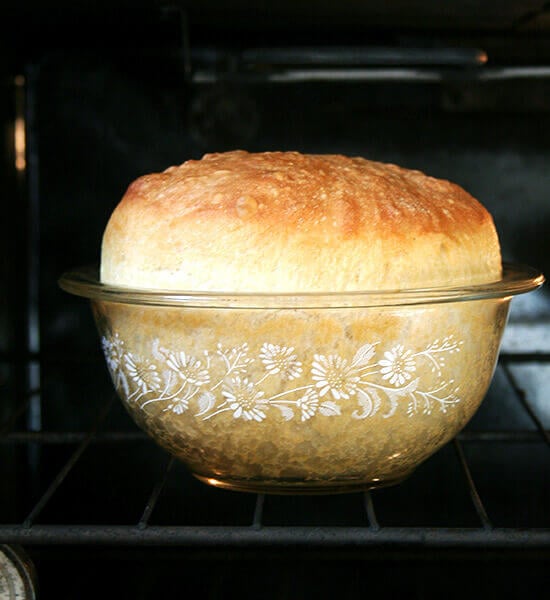
My Mother’s Peasant Bread: The Best Easiest Bread You Will Ever Make
- Total Time: 2 hours 27 minutes
- Yield: 2 loaves
Description
Notes:
The bread:
This is a sticky, no-knead dough, so, some sort of baking vessel, such as pyrex bowls (you need two 1-qt bowls) or ramekins for mini loaves is required to bake this bread. See notes below the recipe for sources. You can use a bowl that is about 2 qt or 2 L in size to bake off the whole batch of dough (versus splitting the dough in half) but do not use this size for baking half of the dough — it is too big.
Peasant Bread Fans! There is now a book: Bread Toast Crumbs, a loaf-to-crumb bread baking book, filled with tips and tricks and answers to the many questions that have been asked over the years. In the book you will find 40 variations of the master peasant bread recipe + 70 recipes for using up the many loaves you will bake. Learn more about the book here or buy it here.
Ingredients
- 4 cups (512 g) unbleached all-purpose or bread flour
- 2 teaspoons (10 g) kosher salt
- 2 cups (454 g) lukewarm water (made by mixing 1.5 cups cold water with 0.5 cup boiling water)
- 2 teaspoons (8 g) sugar
- 2 teaspoons (8 g) instant yeast, I love SAF Instant Yeast, see notes below
- room temperature butter, about 2 tablespoons
Instructions
- Mixing the dough: In a large mixing bowl, whisk together the flour, salt, sugar, and instant yeast (I love SAF Instant Yeast). Add the water. Mix until the flour is absorbed. (If you are using active dry yeast, see notes below.)
- Let it rise. Cover bowl with a tea towel or plastic wrap and set aside in a warm spot to rise for at least an hour. (In the winter or if you are letting the bread rise in a cool place, it might take as long as two hours to rise.) This is how to create a slightly warm spot for your bread to rise in: Turn the oven on at any temperature (350ºF or so) for one minute, then turn it off. Note: Do not allow the oven to get up to 300ºF, for example, and then heat at that setting for 1 minute — this will be too hot. Just let the oven preheat for a total of 1 minute — it likely won’t get above 100ºF. The goal is to just create a slightly warm environment for the bread.
- Preheat the oven to 425ºF. Grease two 1-qt or 1.5-qt oven-safe bowls (see notes below) with about a tablespoon of butter each. Using two forks, punch down your dough, scraping it from the sides of the bowl, which it will be clinging to. As you scrape it down try to pull the dough toward the center (see video below for guidance). You want to loosen the dough entirely from the sides of the bowl, and you want to make sure you’ve punched it down. Then, take your two forks and divide the dough into two equal portions — eye the center of the mass of dough, and starting from the center and working out, pull the dough apart with the two forks. Then scoop up each half and place into your prepared bowls. This part can be a little messy — the dough is very wet and will slip all over the place. Using small forks or forks with short tines makes this easier — my small salad forks work best; my dinner forks make it harder. It’s best to scoop it up fast and plop it in the bowl in one fell swoop. Some people like to use flexible, plastic dough scrapers for this step.
- Let the dough rise again for about 20 to 30 minutes on the countertop near the oven (or near a warm spot) or until it has risen to just below or above (depending on what size bowl you are using) the top of the bowls. (Note: Do not do the warm-oven trick for the second rise, and do not cover your bowls for the second rise. Simply set your bowls on top of your oven, so that they are in a warm spot. Twenty minutes in this spot usually is enough for my loaves.)
- Bake it. Bake for 15 minutes. Reduce the heat to 375º and bake for 15 to 17 minutes longer. Remove from the oven and turn the loaves onto cooling racks. If you’ve greased the bowls well, the loaves should fall right out onto the cooling racks. If the loaves look a little pale and soft when you’ve turned them out onto your cooling racks, place the loaves into the oven (outside of their bowls) and let them bake for about 5 minutes longer. Remove from oven and let cool for 10 minutes before cutting.
Notes
- The bowls: The cheapest, most widely available 1-qt bowl is the Pyrex 322. Update: These bowls are becoming harder to find and more expensive. As a result, I’m suggesting this cheaper option: the Pyrex 3-piece set. You can split the dough in half as always (see recipe) and bake half in the 1-quart bowl and half in the 1.5 quart bowl. The loaves will not be the same shape, but they will be delicious nonetheless.
- Yeast: I buy SAF Instant Yeast in bulk from Amazon I store it in my fridge or freezer, and it lasts forever. If you are using the packets of yeast (the kind that come in the 3-fold packets), just go ahead and use a whole packet — It’s 2.25 teaspoons. I have made the bread with active dry, rapid rise, and instant yeast, and all varieties work. The beauty of instant yeast is that there is no need to “proof” it — you can add the yeast directly to the flour. I never use active-dry yeast anymore.
- If you have active-dry yeast on hand and want to use it, here’s how: In a small mixing bowl, dissolve the sugar into the water. Sprinkle the yeast over top. There is no need to stir it up. Let it stand for about 10 to 15 minutes or until the mixture is foamy and/or bubbling just a bit — this step will ensure that the yeast is active. Meanwhile, in a large bowl, whisk together the flour and salt. When the yeast-water-sugar mixture is foamy, stir it up, and add it to the flour bowl. Mix until the flour is absorbed.
- Troubleshooting: You can find step-by-step video instruction here.
- Several commenters have had trouble with the second rise, and this seems to be caused by the shape of the bowl they are letting the dough rise in the second time around. Two hours for the second rise is too long. If you don’t have a 1-qt bowl, bake 3/4 of the dough in a loaf pan and bake the rest off in muffin tins or a popover pan. The second rise should take no more than 30 minutes.
- Also, you can use as many as 3 cups of whole wheat flour, but the texture changes considerably. I suggest trying with all all-purpose or bread flour to start and once you get the hang of it, start trying various combinations of whole wheat flour and/or other flours.
- The single most important step you can take to make this bread truly foolproof is to invest in a digital scale. This one costs under $10. If you are not measuring by weight, do this: scoop flour into the measuring cup using a separate spoon or measuring cup; level off with a knife. The flour should be below the rim of the measuring cup.
- Here’s a printable version of this recipes that’s less wordy: Peasant Bread Recipe, Simplified
- How to Bake the Peasant Bread in a Dutch Oven: Preheat a Dutch Oven for 45 minutes at 450ºF. Dust a clean work surface with flour. After the first rise, turn the dough out onto the floured surface and shape it into a ball: I like to fold it envelope style from top to bottom, then side to side; then I flip it over and use the pinkie edges of my hands to pinch the dough underneath and create some tension. Transfer the dough to a sheet of parchment paper. Let rest for 20 minutes. If you feel your dough is spreading too much you can lift up the sheet of parchment paper, dough and all, and place it in a bowl of a similar size. After the 20 minutes, transfer the dough, parchment paper and all to the Dutch oven. Carefully cover it. Bake 30 minutes. Uncover. Bake 15 minutes more.
- To bake the peasant bread in a loaf pan: If you are using an 8.5×4.5-inch loaf pan or a 9×5-inch loaf pan, you can bake 3/4 of the dough in it; bake off the rest of the dough in ramekins or other small vessels … the mini loaves are so cute. You can also make 1.5x the recipe, and bake the bread in 2 loaf pans. If you have a large loaf pan, such as a 10×6-inch loaf pan, you can bake off the entire batch of dough in it. For loaf pans, bake at 375ºF for 45 minutes.
- How to Bake at Hight Altitude:
- First try the original recipe as written (preferably with a scale). You may not need to make any adjustments. One commenter, who lives at 9200 ft finds the original recipe to work just fine as is.
- If the original recipe doesn’t work, try adding a little bit more water because it rises fast and it is so dry: about a quarter cup for every 512 g of flour.
- Try decreasing the yeast to 1.5 teaspoons.
- If your dough is especially gooey, try decreasing the water by 1/4 cup. But, if you aren’t using a scale, my first suggestion would be to buy a scale and weigh the flour, and make the bread once as directed with the 2 cups water and 512 grams flour, etc.
- Punch the dough down twice before transferring it to the buttered Pyrex bowls. In other words, let it rise for 1-1.5 hours, punch it down, let it rise again for about an hour, punch it down, then transfer it to the buttered bowls.
- Variations:
- #1. Cornmeal. Substitute 1 cup of the flour with 1 cup of cornmeal. Proceed with the recipe as directed.
- #2. Faux focaccia. Instead of spreading butter in two Pyrex bowls in preparation for baking, butter one 9×9-inch glass baking dish and one Pyrex bowl or just butter one large 9×13-inch Pyrex baking dish. If using two vessels, divide the dough in half and place each half in prepared baking pan. If using only one large baking dish, place all of the dough in the dish. Drizzle dough with 1 tablespoon of olive oil (if using the small square pan) and 2 tablespoons of olive oil (if using the large one). Using your fingers, gently spread the dough out so that it fits the shape of the pan. Use your fingers to create dimples in the surface of the dough. Sprinkle surface with chopped rosemary and sea salt. Let rise for 20 to 30 minutes. Bake for 15 minutes at 425ºF and 17 minutes (or longer) at 375ºF. Remove from pan and let cool on cooling rack.
- #3. Thyme Dinner Rolls
- #4 Gluten-free
- #5. Everything Bagel Seasoning Bread. Simply coat the buttered bowls with Everything Bagel Seasoning. Watch a how-to on Instagram Stories here.
- #6: Whole Wheat Peasant Bread. Use as much as 50% whole wheat flour. I like King Arthur Flour’s white whole wheat flour (see this post) or sprouted wheat flour (see this post).
- Prep Time: 5 minutes
- Cook Time: 32 minutes
- Category: Bread
- Method: Baked
- Cuisine: American
This post may contain affiliate links. Please read my disclosure policy.

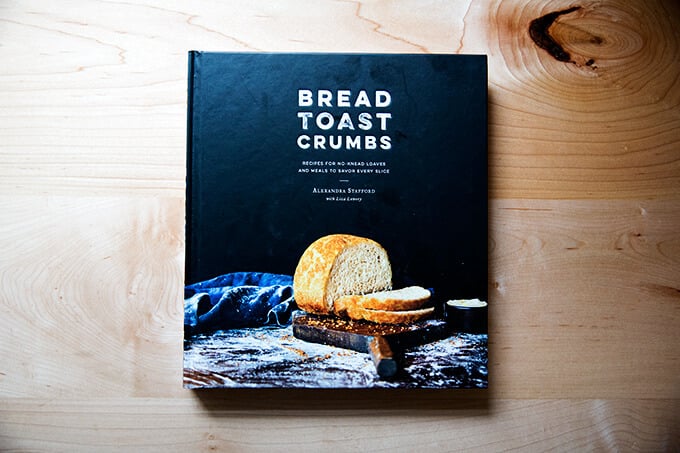
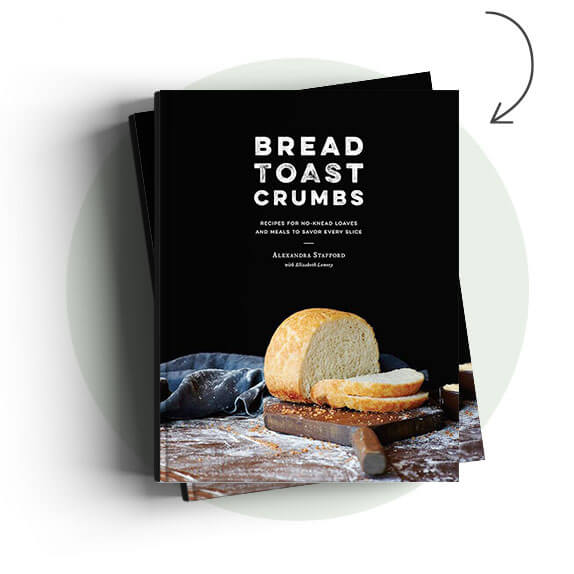

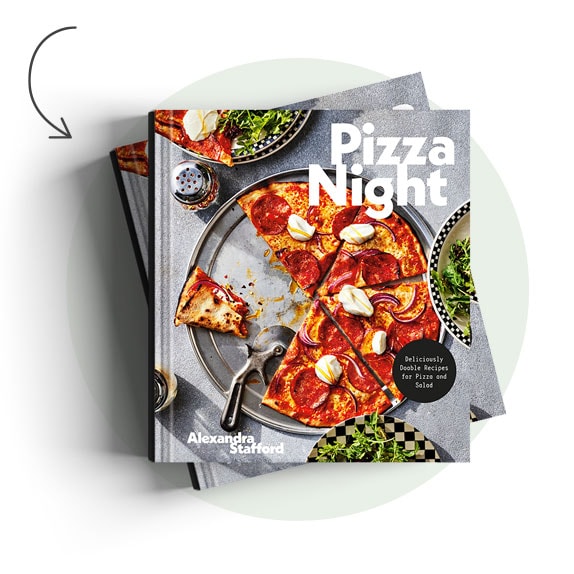

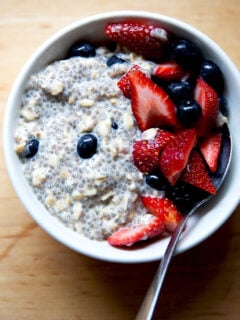
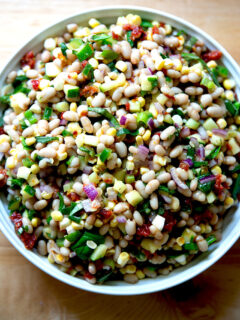
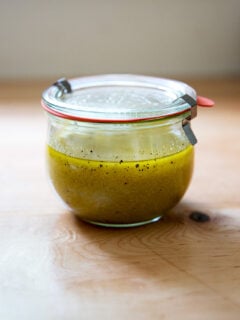
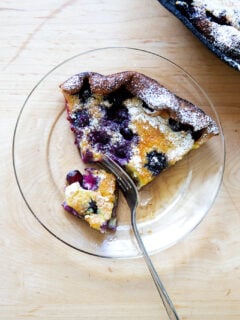

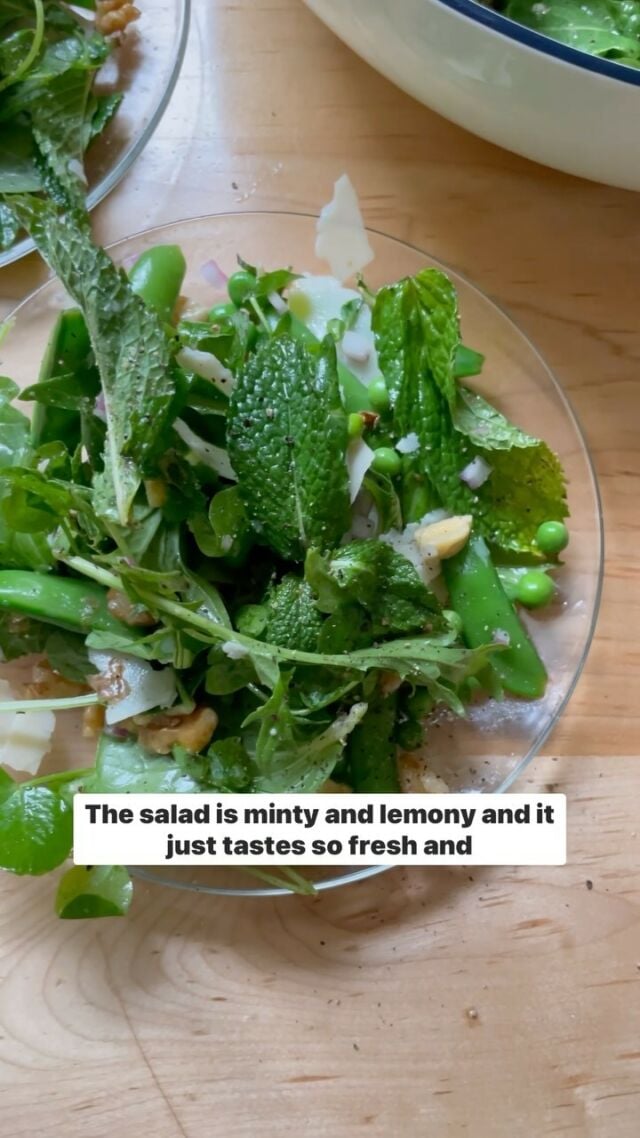
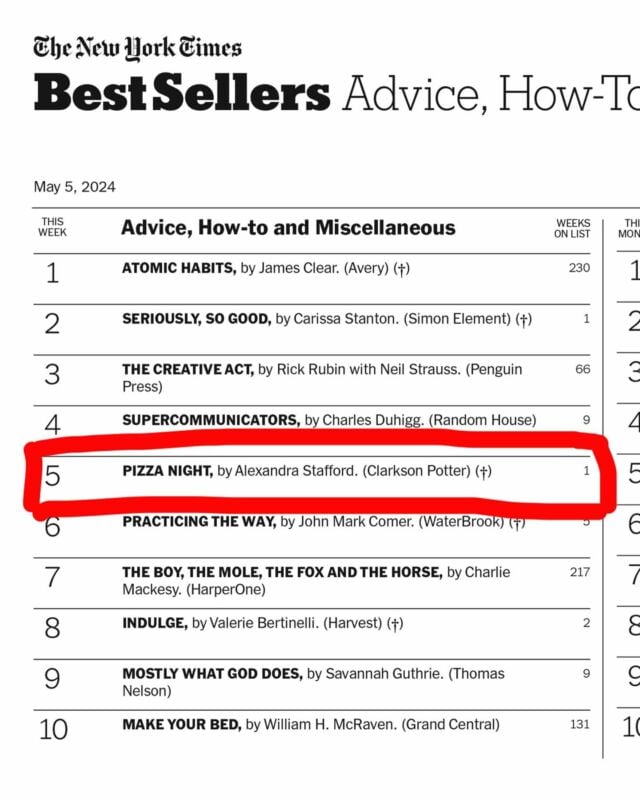
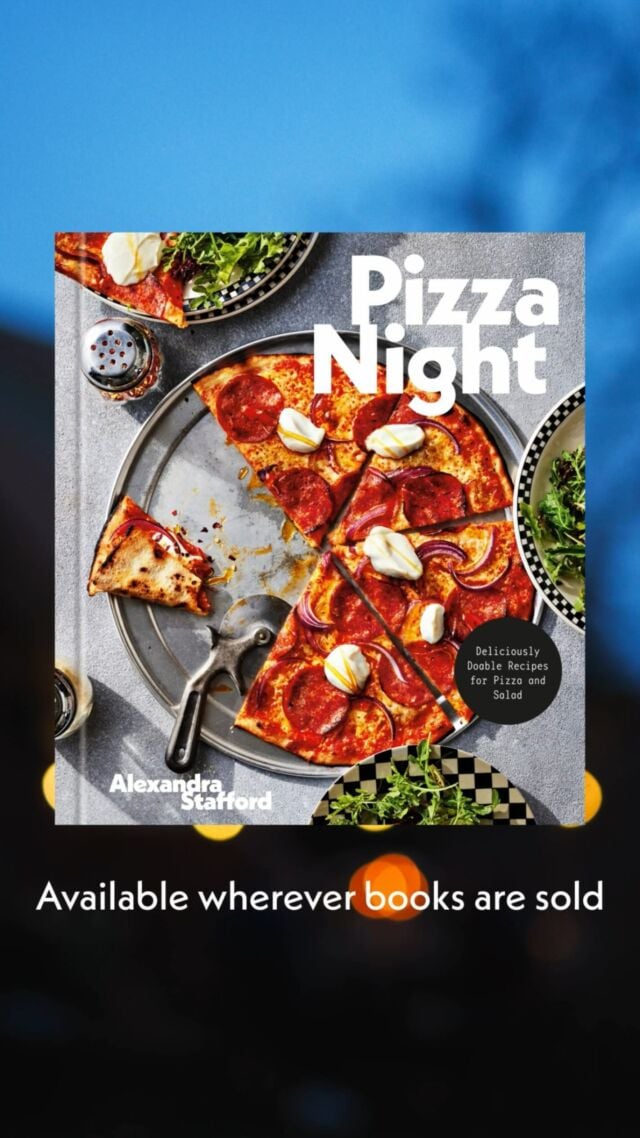
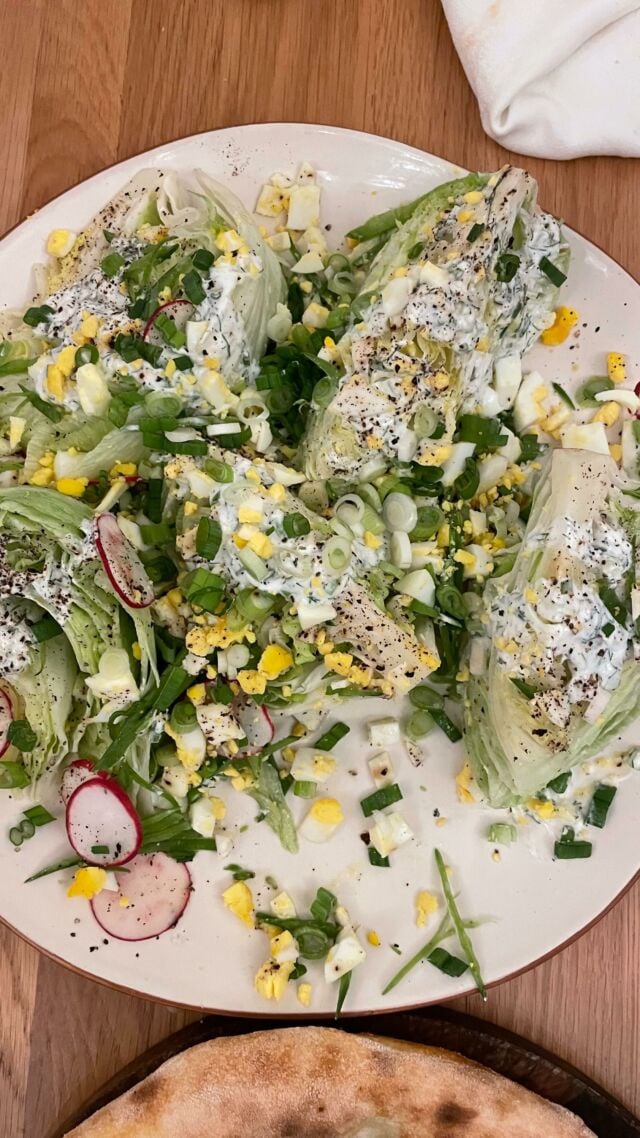

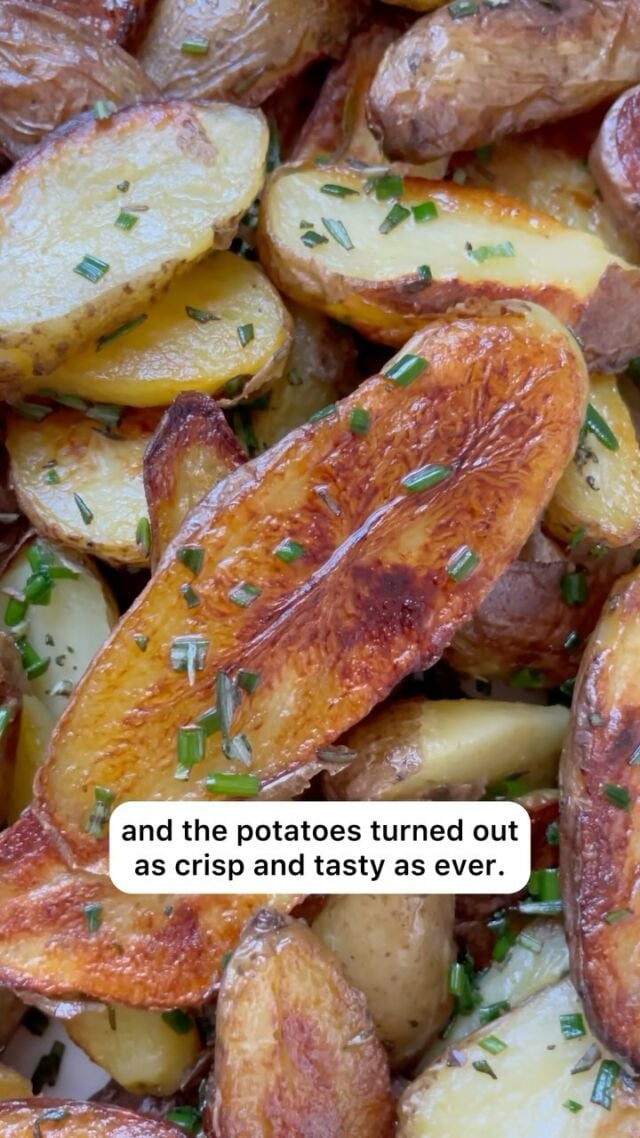
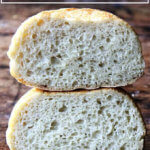
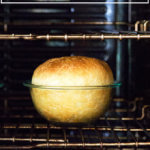
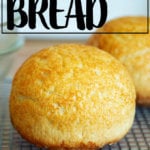
6,418 Comments on “My Mother’s Peasant Bread: The Best Easiest Bread You Will Ever Make”
Made this yesterday in the 2.5L bowls and oh my goodness, soooo yummy! I make a no-knead artisan bread and hubby loved this even more! Thanks for the recipe, this will be my go-to bread from now on!! =)
Tammy and Tracy — SO happy to hear this! Nothing makes me happier than when this recipe turns out well for people.
Thanks…I will try it this coming weekend!
I’m so excited to bake my “bowls”! I have 3 more mins. before I put them in the oven but so far they are looking good! Bread recipes never seem to work out for me. Maybe this could be the one! Thank you so much for sharing.
Found a decent price on the Pyrex 322 bowls here: https://www.shopworldkitchen.com/pyrex/mixing-bowl-5302485 $3.49 each
Dana — Awesome! Thanks so much for sharing! I might have to order a few more bowls myself…love that size!
Thank you for posting. I am just curious, and I saw someone else had the same issue. Mine was not nearly as wet as your picture. I had to add another 1/2-3/4 cup of water to get it to even mix in with the 4 Cups of flour. It was 1 1/2 cups cold water and 1/2 cup boiling water, correct? I don’t mean to question what is obviously on the recipe, but am sure we put the right amount in because I was teaching my 13 year old about measuring.
Beth — the measurements for the amount of water are correct: 2 cups total. Others have had the same issue, and so I have suggested measuring 4 scant cups of flour, or even starting with 3 cups of flour. You could mix 3 cups of flour with the 2 teaspoons of salt; mix the water with the yeast and sugar; add the wet to the dry; and then slowly add the last cup of flour, adding just enough to get the consistency right. Or if you have a digital scale, that’s the most accurate way to measure. Sorry for the trouble with the texture 🙁 Hope the bread turned out well anyway.
thank you for making the recipe available in pdf format! My laptop is not connected to a printer and this makes it so much easier for me to bring up and follow.
Hi there, I found your blog via Pinterest — and wanted to say that if anyone wanted, you can go to the Pyrex web site, and right now, a 1.5 quart bowl is currently listed at $4.49 (1.5 quarts = 1.41 liters). While that may not be flea-market or thrift-store pricing, it’s pretty reasonable!
oops – better link for that would be: https://www.shopworldkitchen.com/pyrex/mixing-bowl-5302516
Lynn — awesome, thanks so much for sharing the link. $4.49 is reasonable to me!
I was so excited to try this recipe, but my dough did not rise the 2nd time.I put them in 1 and 1.5 L Pyrex bowls. What did I do wrong???? I used 2 tsp Sea Salt instead of Kosher (my sea salt was very coarse). Help! I really want this to work out for me! Any suggestions would be greatly appreciated!
Amy — one question: when you let the dough rise the first time, did you do it in a warm oven? And if so, did you just preheat the oven for a total of 1 minute versus letting the oven heat up to its hottest setting and then heat there for 1 minute? I am trying to get to the bottom of why people are struggling with the second rise, and during the course of an email conversation with another Reader, I discovered that the issue was a misunderstanding in the instructions about the warm-oven step. I don’t think the salt should be an issue. And you are using the right bowls, so there shouldn’t be any issue with the baking vessel. I am truly stumped. How long did you let the dough rise the first time around?
Tried this recipe tonight. First time baking bread and it came out fantastic! Every step of the way went exactly as you said it would, which is a miracle since I’m somewhat recipe-challenged!
Caroline — wonderful to hear this!
OMG, I tried your bread this afternoon!!!! I used half white and half wheat and it was so good!! Although I dont think the second rise was as big as it should have been it still was the bomb!!!! Should we cover for 2nd rise? Does the rise matter if your cabin is damp or the humidity? Im new to this yeast thing, Thank you, Geri
Geri — I don’t ever cover during the second rise, because it shouldnt take more than 30 minutes. I usually just place the bowls on top of my stovetop while it preheats. One question: did you let the bread rise in a warm oven the first time around? And if so, did you preheat it for a minute total? Or to its highest setting and then for a minute at that setting? I am worried the oven temp of the “warm” oven might be too hot for many of the people having trouble with the second rise.
I tried this tonight. I was a little worried because it didn’t rise as high as yours did but I think my bowls were just the wrong size. It’s got a crispy crust and it’s light, fluffy and delicious on the inside. This recipe is a keeper!! Thank you!
Jennifer — wonderful to hear this! Did you do the warm-oven trick for the first rise? And if so, can you tell me if you let it heat for a minute total or for a minute once it got to its highest setting? Thanks!
I’m so excited to try this! I was wondering though, have you ever added anything to it to give it a different flavor, like jalapeno or cheese?
Melissa — I have not, but many commenters have — somebody did in fact use jalapeño and cheese with success. See Scarlett’s ideas, too…they sound yummy
WOWW!!! This is a fantastic and very forgiving recipe!! My first time ever working with yeast and making bread. I used whole wheat flour instead of the all purpose flour and topped my dough with rosemary / garlic/ sea salt on one bowl and italian herb/crushed red pepper/sea salt on another. It came out Fantabulous!!! I am so excited! I will be making this often.
Scarlett — wonderful to hear this! Somebody was just asking about whole wheat flour. Awesome to hear that it turns out well. Love your flavor additions!
Hi There.
I had the right size of pyrex bowls to use. Followed the instructions. Looked just like yours until the second rise. Same thing as some of the others. After 30 minutes it was not close to the top of the bowl. Also I wanted a clarification. In the directions it says preheat the oven to 450, grease bowls etc. Are you letting the oven sit at 450 the entire time it is rising? Your are not putting the bread in at that time I assume. I am guessing that it is for cooking the first 10 minutes. I am going to try this again. I bake bread all the time and have never had this happen. If you have figured anything new out I would be happy to hear. Thank you!
Linda, hi! Ok, so I do usually preheat the oven to 425 right after I place the dough into the greased bowls. The second rise should take no more than 30 minutes, so I set my bowls on top of my stovetop while the oven preheats, and that usually provides a little heat to help the rising process along. I am sorry to hear about the issue with the second rise and want to get to the bottom of it. When you let the bread rise the first time around, did you stick it in the warm oven? If so, I am worried that the oven may have been too hot — did you let it preheat for a minute total or did you let it get to its hottest setting first, then let it heat for a minute?
I made this last night. I only had bleached all-purpose as that’s what my husband bought, but it didn’t seem to matter.
I second what Linda just said, had the right bowls, let it rise two hours, but second rising did not rise as far. Maybe I should have let it rise longer than 30 minutes, but ran out of time. It did rise some more during baking, but not exactly like the pictures,
Regardless, it was amazing! Both loaves were gone. My 17 year old son said, “You’re going to have to teach me how to do this”!! What a great husband he will be some day!
Thank you so much for sharing!
Dawn — I am so happy to hear that the bread was still amazing despite the issues with the second rise? I am losing track of everybody I have emailed, but did you let the bread rise in a warm oven? And if so, did you preheat if for 1 minute total, or did you preheat it to its hottest setting and then let it heat at that temp for a minute? I am worried that the troubles with the second rise have to do with the oven being too hot for the first rise.
Thank you so much for getting back to me. The bread was out of this world wonderful!!! I am making it again today to take to work to share with friends, that is if I can sneak it past my kids…guess I had better make a double batch 😉 I have a feeling this one is going viral. Thank you so much for sharing.
Beth, wonderful to hear this!
I just made this and it is wonderful! I made one in a bowl and one in a round casserole dish ’cause that is all I had in the right size and it turned out just fine. I also really punched the dough with the forks and that did not seem to hurt it a bit. It was very very wet though and I could not seperate it in one go (i weighed the flour out, next time I might add a bit more), but again, didn’t seem to matter in the end. Thank you so so so so much for sharing this! It is now my go to bread recipe and I can stop buying commercial bread with all the yucky stuff in it!!!
Jenn — so happy to hear this! I just want everyone to have these same results!
I just hate when people do this to someone who has posted a perfectly lovely recipe, but…..I wonder if anyone has had success with this bread with whole grain flour? I mill my own and can’t bring myself to buy the overly processed store bought stuff.
Thanks for indulging a “your recipe is great, but what if you changed it in a major way” question.
Anna, you are funny. First of all, I am so impressed that you mill your own flour. I had one friend in CA who did the same and swore by it. So, is 100% whole wheat flour what you are asking about? Or is even that too processed for you? The furthest I usually go with subbing whole wheat flour is half, but my mother has had success with 3 cups whole wheat and 1 cup white flour, and I think one Reader did in fact make the whole recipe with whole wheat flour and liked it despite it being a little dense. Hope that helps!
Alexandra — What I’m using is 100% whole wheat, milled from grain….I use hard white or hard red grain and mill it on the “bread” setting.
I can’t recommend milling your own highly enough…the flavor of freshly milled flour is as different as the difference between fresh and canned asparagus. I do it for the nutrition, but the flavor is a wonderful bonus.
I’ll give it a try and get back to you…I can’t imagine why it wouldn’t be wonderful. Although, I have to admit that I do have a fondness for kneading. 🙂
Anna — am I going to have to buy a miller? No, seriously, should I? Do you recommend a brand? I’ll have to hold off in the short term since I’m trying to be a good girl with the recent holidays behind us, but it would be fun to think about. So, do you buy grains in bulk? I’m so curious. This sounds like fun.
Question! I don’t own glass bowls but I own a whole host of different glass pans. Glass pie pans, round casserole dishes, square casserole dishes and loaf pans. Would any of these be suitable?
Michelle — Yes, definitely. I would go for the glass loaf pan first. Bake off about 2/3 or 3/4 of the dough in this glass pan, and make mini loaves in muffin tins or ramekins or in a popover pan. Your other pans will work, too, but the wider the pan, the flatter and more disk-like the ultimate loaf will be. Hope that helps!
I love the almost no-knead bread recipe from Cook’s illustrated. I will definitely give this one a try! I love using instant yeast that I purchase from King Arthur, no proofing required or messing with water temperatures, just toss it in with the dry ingredients. Works perfectly and comes in the bags to be stored in fridge.
Becky — great tips. I updated the post with a link to the instant SAF yeast on King Arthur Flour — that stuff is great. I use Red Star now, but for no particular reason…perhaps the free shipping on amazon now that I think about it, but I do love the instant yeast too.
How do you think this will work gluten free? My daughter has Celiac’s a
Myndi — only one Reader (that i know of at least) so far has attempted this recipe gluten free. She said it was good but not great — a little dense and heavy. I have some c4c flour on hand and have been wanting to try this recipe gluten free. I will report back if I make any discoveries worth sharing.
This was soooo good!! I have almost eaten 1 whole loaf myself!! Thank you for this recipe!!
Jill — wonderful to hear is!
Delicious!!!! I didn’t get them to rise more than half way the second time…. Not sure what I did wrong. Any suggestions?
Meg — so happy to hear this. Questions: what size bowl are you using to bake off the bread? And how did you let the bread rise the first time around? In a warm oven? Did you see the updated notes in the recipe about creating that warm spot?
Hello, I want to give this a try. I bought two 1L pyrex bowls today and they just look so small. Yours look huge in the pictures compared to the ones I bought. I just want to make sure I got the right size bowls. It says 4 cups – 1L. Is that correct? Thanks, I can’t wait to try this.
Tracy — that is perfect! I just measured 4 cups of water into my 1L bowl and it filled it up to the tippy top. The bowls are definitely small in real life. I hope this turns out well for you! Ive added some notes to the recipe, so hopefully the instructions are clear!
My dough wasn’t “wet” at all for the first rise. It was heavy and dense. I measured out the ingredients as noted. Help! It’s doing the rise right now, and I’ll let you know how it turns out, but I’m worried that it’s not sloppy enough!
Samantha — I think we must just measure flour differently — others have experienced the same issue. If you end up liking the bread (which I so hope you do!), next time I recommend measuring out 3 cups of flour, mixing that with the salt, mixing the water with the yeast and sugar, mixing the wet with the dry, and then slowly adding the fourth cup of flour until you’ve got the right consistency. Does that make sense? Hope the rise is going well.
i made this last night and the dough was very dry. i even added more water so that it would mix well enough. the finished product was dry and hard as well. could it have been that i used whole wheat flour? i thought i read in one of your comments that you also used whole wheat, but in the pictures the bread looks a million times whiter than mine. i would love to try it again if you have any suggestions. thanks.
Paula — Did you end up using all wheat flour? That will definitely create a dryer, harder, denser loaf. I rarely use anything other than white, all-purpose flour, but I note in the notes of the recipe that you can substitute as many as 3 of the cups with whole wheat flour, but the flavor and texture will be compromised. I suggest trying the recipe with white flour first, or with 3 cups white flour and 1 cup wheat flour, and then start adjusting after you see how that batch turns out. I hope that helps. Have a nice weekend!
Tried this recipe today and it came out great. So easy. My little boy loved it with some Nutella.
Daniela — so happy to hear this! My children love Nutella as well (as do I!).
So, I love the oven tip for rising. I keep my place pretty cool (why pay the gas bill, when I can just wear a sweater?) so my previous attempts were pretty poor. And I have no counter space so a no-knead is a must!
My question is how long will this keep without freezing? I’m looking to make a sandwich bread on Saturday where one batch will last until the next weekend (assuming it doesn’t get eaten first!). I am just not interested in making a loaf of bread when I get home from work at 5:30 and I don’t need fresh bread at 9pm!
Celthis — Without freezing, I would say that it keeps for 4 to 5 days if your place is pretty cool. The thing is is that after day 2, it really needs to be toasted for it to taste good — it definitely gets stale quickly. Do you have a freezer? Or do you just not really like freezing? I’m not the best freezer wither, but I do freeze bread. We always just slice it up, wrap it in plastic wrap — about 6 to 8 slices per pack — and then it take out and toast as we need for sandwiches or toast or dinner bread, etc. You might be able to get the bread to last for a week since you keep your place pretty cool, but I definitely notice mold spores on the outside of the bread after about 6 days or so — our kitchen gets surprisingly toasty even in the winter, and the ziplock bags are probably not the best storage option for them, but that’s what we do.